[520 common garden flowers and trees (Part 2)]
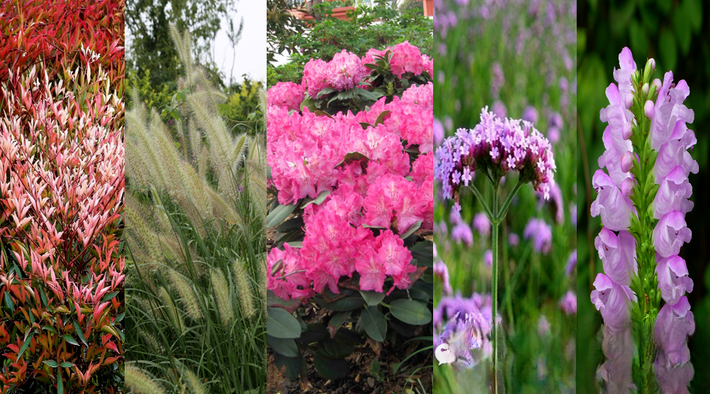
In the first issue, we briefly introduced 520 common garden flowers and trees, which basically covered the common plant species in the north. Starting from this issue, we will introduce the characteristics, habits, cultivation, uses and other aspects of each plant in detail. This issue brings you five plants: alpine rhododendron , pennisetum , flame nandina (Nandina domestica) , false dragon head , and verbena . Let's learn together!
1. Alpine Rhododendron
Latin: Rhododendron lapponicum
Family: Ericaceae, Rhododendron
Origin: Daxinganling, Changbai Mountain and Inner Mongolia in Northeast China. It is also distributed in Canada and Alaska, USA.
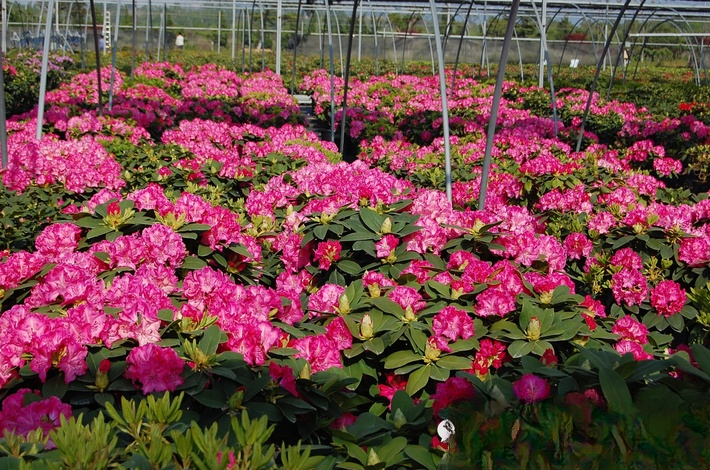
Figure 1. Alpine rhododendron from Weihai Qicai Biotechnology Co., Ltd.
1. Characteristics
Rhododendron australis is an evergreen shrub, 20-100cm high, with many branches. Young branches have brown scales and fine hairs, which fall off as they grow. Leaves are scattered at the top of the branches, leathery, elliptical or obovate (as shown in Figure 2). Umbels are terminal, with 3-7 flowers, flower bud scales fall off, pedicels are 1.5-4cm long, calyx is 1-2mm small, with 5 red or purple lobes. The corolla is funnel-shaped, 7-13mm, lavender rose to purple, rarely white, the flower tube is 2-5mm long, and the stamens are 5-10, which are the same length as the flower tube (as shown in Figure 3). The ovary has 5 chambers, and the style is 1.1-1.5cm long. The fruit is a capsule, oblong-ovate, about 3-6mm long, densely covered with scales, flowering from May to July, and fruiting from September to October.
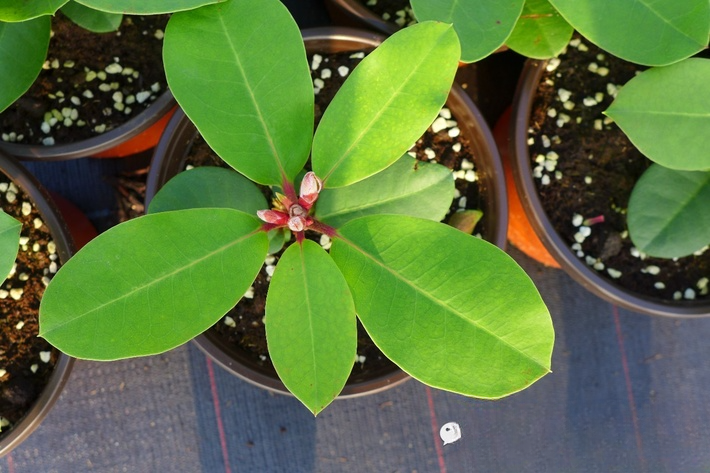
Figure 2. Close-up of the leaves of alpine rhododendron
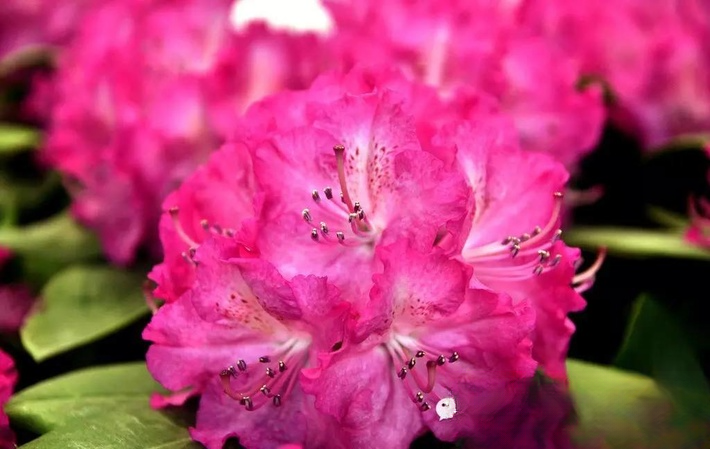
Figure 3. Actual shot of alpine rhododendron flowers
2. Habits
Alpine azalea grows in high mountains, tundra, rocky places and swamps (Figure 4). It likes loose, acidic (Ph4-6) soil. The survival rate of cuttings is the highest at Ph4-5, and the stems and roots grow best at Ph4, but it grows poorly in Ph greater than 7 or clay. The growth, development and flowering of alpine azaleas are best when the light intensity reaches 60%. Azaleas like light, but are afraid of light at the same time. They are semi-shade and partial-sun plants.

Figure 4. Growth environment of alpine rhododendron
(III) Cultivation
① Reproduction
The propagation methods are cutting propagation and tender branch propagation. For cutting propagation, take semi-lignified new branches about 5-8 cm long in May and June, cut off the lower leaves, keep 2-3 leaves on the upper part as cuttings, dip the base with indolebutyric acid and ABT rooting powder solution, and then cut the cuttings in loose, breathable, humus-rich acidic soil, keep the temperature at 20-25℃, shade and spray for moisture retention. For tender branch cleft grafting, cut tender branches 3-4 cm long as scion, cut the base into a wedge shape with a knife, use hairy azalea as the rootstock, use tender branch cleft grafting, then place under a shade shed and tie with plastic film, and cover the scion and rootstock with a plastic bag for moisture retention.
② Fertilizer and water management
The soil in the north is alkaline potting soil, which can be mixed with decomposed pine needle soil. The root system of alpine azalea is whisker-shaped, so it is required to strictly follow the principle of appropriate amount of fertilizer for leaves and frequent application of thin fertilizer. In order to promote the growth of branches, leaves and buds before flowering in spring, phosphate fertilizer can be applied once a month. After flowering, a mixed fertilizer mainly composed of nitrogen and phosphorus can be applied 1-2 times. Phosphorus fertilizer is applied 1-2 times during the bud formation period from September to October. More fertilizer and water are required during the growth period and flowering period. Water and fertilizer should be controlled during the winter dormancy and summer slow growth period to prevent root rot. Azalea likes a moist and cool environment. Water should be replenished in time when the air in the north is dry. A small amount of ferrous sulfate and vinegar can also be added. Watermelon and tomatoes cut into small pieces can also improve the soil quality.
③Pruning and shaping
To promote the blooming of the plant, pinching can be used to promote the growth of new branches. For those whose flowers are clustered and affect the flower shape, buds can be thinned out early. This is conducive to large and bright flowers, and is also conducive to the plant's long-term growth and flowering. Pruning is generally done in spring after the flowers have faded and in autumn. Dead branches, oblique branches, long branches, diseased and insect-infested branches, and some cross branches are removed to avoid nutrient consumption and make the whole plant bloom fully.
④ Disease and pest control
Leaf swollen disease: spray 1:1:200 Bordeaux mixture before the disease occurs, and remove diseased leaves in time; spray 0.3-0.5 degrees Baume lime sulfur mixture or 1:1:200 Bordeaux mixture 2-3 times before germination, once every 7-10 days; during the disease period, spray 500 times diluted 65-80% mancozeb or 0.3-0.5 degrees Baume lime sulfur mixture 3-4 times, also once every 7-10 days.
Leaf spot disease: For leaf spot disease and brown spot disease, spray 1000 times diluted 70% thiophanate-methyl, 4000 times diluted 20% triadimefon, 500 times diluted 50% mancozeb in May-August, spray once every 10 days, a total of 7-8 times, which can effectively control the development of the disease.
(IV) Purpose
Excellent bonsai material; planted in groups at the edge of forests, streams, pools and next to rocks. It is a good material for flower hedges and can be cultivated into a variety of shapes through pruning. It can also be used as low walls and barriers.
2. Pennisetum
Latin: Pennisetum alopecuroides
Family: Poaceae, Pennisetum
Origin: Pennisetum is distributed from Northeast China and North China through East China, Central South and Southwest China; it mostly grows on field banks, wastelands, roadsides and hillsides at an altitude of 50-3200 meters.
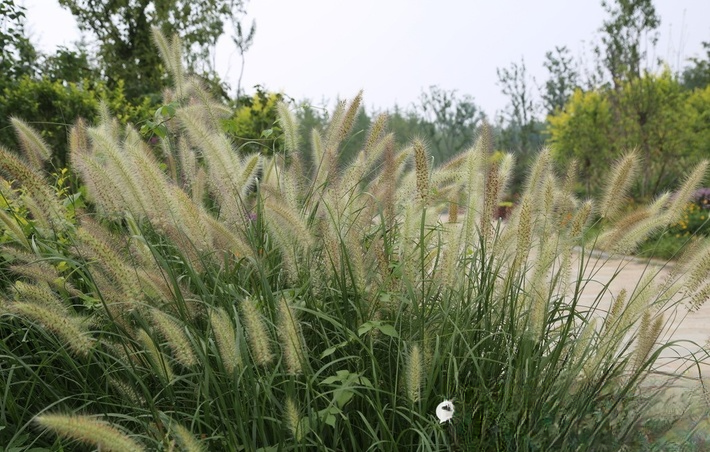
Figure 5. Landscape application of Pennisetum
1. Characteristics
Pennisetum is a perennial herb (see Figure 6). The fibrous roots are relatively strong (see Figure 7). The culms are erect, clustered, 30-120 cm high, and densely covered with soft hairs under the inflorescence. The leaf sheaths are smooth, flattened on both sides, with ridges on the main veins, which are straddled at the base and longer than the internodes at the top of the culm; the ligule has cilia about 2.5 mm long; the leaves are linear, 10-80 cm long, 3-8 mm wide, with a long acuminate tip and warty hairs at the base. The panicle is erect, 5-25 cm long and 1.5-3.5 cm wide (see Figure 8); the main axis is densely pubescent; the peduncle is 2-3 (-5) mm long; the bristles are rough, light green or purple, 1.5-3 cm long; the spikelets are usually solitary, occasionally twin, linear-lanceolate, 5-8 mm long; the first glume is tiny or absent, 1-3 mm long, membranous, obtuse at the apex, with inconspicuous veins or 1 vein; the second glume is ovate-lanceolate, with a short pointed apex, with 3-5 veins, about 1/3-2/3 of the length of the spikelet; the first floret is neutral, the first lemma is the same length as the spikelet, with 7-11 veins; the second lemma is the same length as the spikelet, lanceolate, with 5-7 veins, and the margin is covered with homogeneous palea; the scales are 2, cuneate; the stamens are 3, the anthers are hairless at the top; the styles are united at the base. The caryopsis is oblong, about 3.5 mm long.
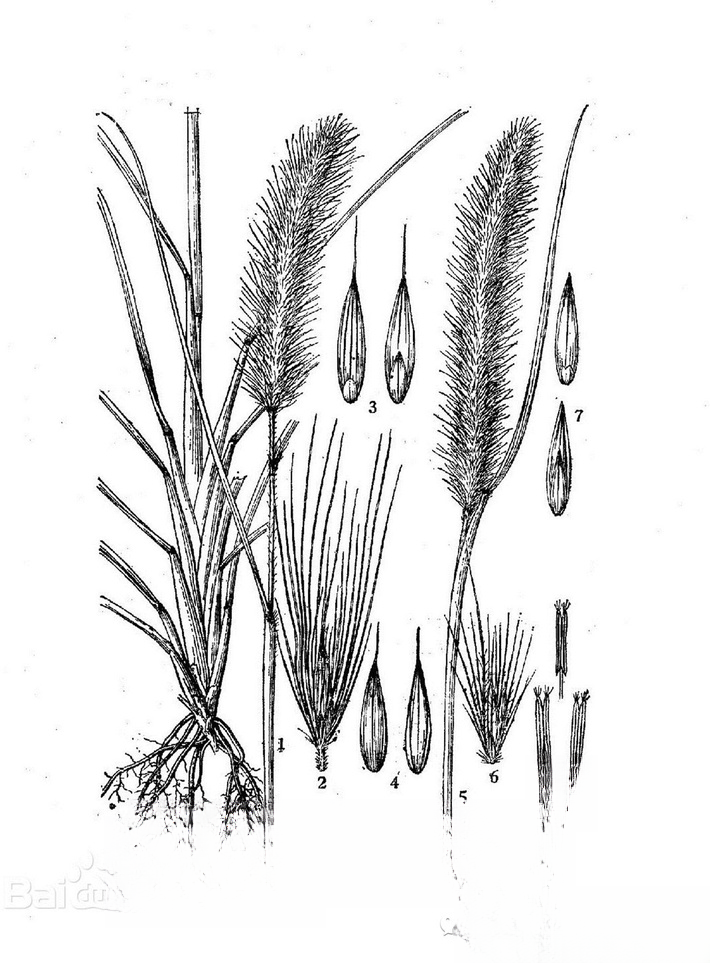
Figure 6. Schematic diagram of the morphology of Pennisetum
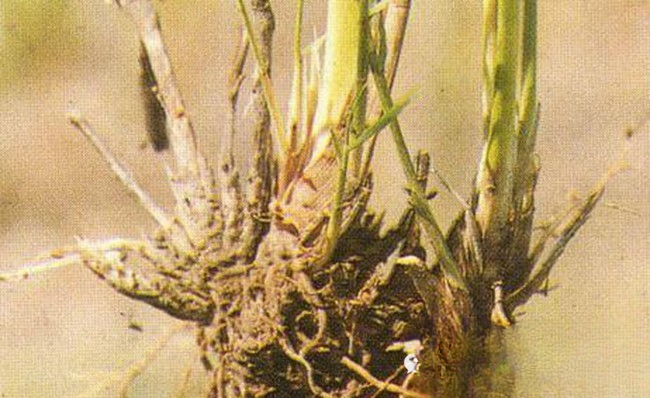
Figure 7. Pennisetum root
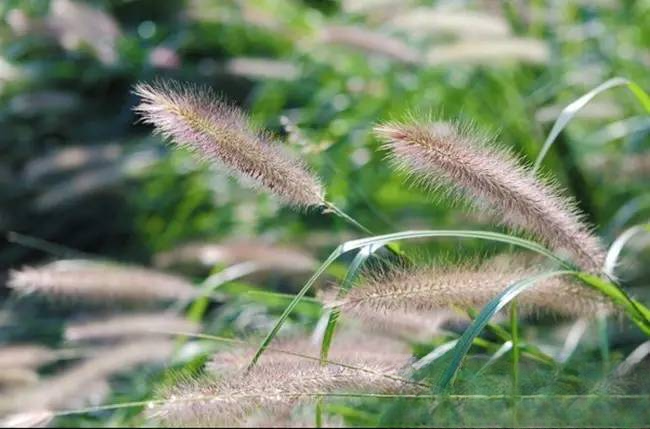
Figure 8. Pennisetum inflorescence
2. Habits
Pennisetum prefers a growing environment with sufficient sunlight, is drought-tolerant, moisture-tolerant, semi-shady, and cold-resistant. It is suitable for warm and humid climate conditions. When the temperature reaches above 20 degrees, the growth rate accelerates. It is drought-tolerant, lodging-resistant, and disease-free, and can form a unique landscape effect.

Figure 8. Wild landscape effect of Pennisetum
(III) Cultivation
When sowing, the soil moisture should be appropriate, and the depth of soil covering after sowing should be about 1.5 cm. Seedlings will emerge 5-6 days after sowing. Mowing is generally done by row sowing, with a sowing rate of 0.7-1.0 kg per mu and a row spacing of 50 cm; seedlings can also be transplanted and transplanted to the field when there are 5-6 leaves. The transplanting density is 4000-5000 plants per mu. The row spacing is 45 cm and the plant spacing is 20-25 cm. In order to prevent underground pests such as ants from harming seeds or seedlings, it is necessary to mix seeds with pesticides or apply poisoned soil. Pennisetum grows slowly in the seedling stage and is often easily invaded by weeds. Intertillage and weeding should be carried out twice in time to promote early tillering. Once tillering begins, it can grow rapidly. Strive for full seedlings in the seedling stage, and irrigate in time in case of drought.
(IV) Purpose
Medicinal value: Clears the lungs and relieves cough, cools blood and improves eyesight. Used for lung heat cough, hemoptysis, red and swollen eyes, carbuncle, sore and poison.
Other values: Pennisetum is the summer forage grass with the highest yield in Huaibei area recommended by animal husbandry experts. It has the characteristics of high quality and high yield, strong regeneration ability, can be cut many times, and is free of diseases and insect pests. It is a favorite food of herbivores such as sheep, cattle, rabbits, geese, and fish. It can be fed fresh or silaged. Under good water and fertilizer conditions, the yield can reach 10,000-15,000 kg. It is also a raw material for weaving or papermaking; it is also often used as oil loquats for traditional oil making; it can also be used as a plant to consolidate embankments and prevent sand.
3. Flame Nandina domestica (Nandina domestica)
Latin: Nandina domenstica
Family: Berberidaceae Nandina
Origin: It is naturally distributed in Hubei, Jiangsu, Zhejiang, Anhui, Jiangxi, Guangdong, Guangxi, Yunnan, Sichuan and other provinces. It can also grow in northern China and is widely used in landscaping.

Figure 9. Flame Nandina domestica from Weihai Qicai Biotechnology Co., Ltd.
1. Characteristics
An evergreen small shrub. The stems are often clustered and sparsely branched, 1-3 meters high, smooth and hairless, young branches are often red, and gray when old (as shown in Figure 10). Leaves are alternate, clustered on the upper part of the stem, tripinnate compound leaves, 30-50 cm long; two to three pinnae are opposite; leaflets are thinly leathery, elliptic or elliptic-lanceolate, 2-10 cm long, 0.5-2 cm wide, gradually pointed at the apex, cuneate at the base, entire, dark green above, turning red in winter (as shown in Figure 11). The veins on the back are raised, glabrous on both sides; nearly sessile.
The panicle is erect, 20-35 cm long; the flowers are small, white, fragrant, and 6-7 mm in diameter; there are multiple whorls of sepals, the outer sepals are ovate-triangular, 1-2 mm long, gradually larger inward, and the innermost sepals are ovate-oblong, 2-4 mm long; the petals are oblong, about 4.2 mm long, about 2.5 mm wide, and blunt at the tip; there are 6 stamens, about 3.5 mm long, with short filaments, anthers longitudinally split, and the connective is extended; the ovary has 1 chamber, with 1-3 ovules. The fruit stalk is 4-8 mm long; the berry is spherical, 5-8 mm in diameter, bright red when ripe, rarely orange-red (Figure 12). The seeds are oblate. The flowering period is from March to June, and the fruiting period is from May to November.

Figure 10. Flame Nandina domestica from Qicai Biotechnology Co., Ltd.

Figure 11. Flame Nandina domestica (winter) from Weihai Qicai Biotechnology Co., Ltd.

Figure 12. Nandina domestica fruit
2. Habits
An evergreen shrub, it loses its leaves in winter when planted in the north. Nandina domestica prefers a warm and humid environment and is relatively shade-tolerant. It is also cold-tolerant. It is easy to maintain. The cultivation soil requires fertile, well-drained sandy loam. It is not very strict about water requirements and can tolerate both moisture and drought. It likes fertilizer and can apply more phosphorus and potassium fertilizers. Apply liquid fertilizer 1-2 times a month during the growing season. After a few years of ornamental potted plants, the branches and leaves age and fall off, and they can be pruned for shaping. Generally, the main stem is left at about 15 cm. It is pruned in April and can be restored to 1 meter in height in autumn, and the crown is full. Soil. The flowering period is from May to July. It grows wild in sparse woods and bushes, and is also planted in gardens. The leaves turn red under strong light. It is suitable for growing in moist, fertile, well-drained sandy loam.
(III) Cultivation
Propagation is mainly by sowing and division, but also by cuttings. It can be sown as soon as the fruit is ripe, or it can be sown in spring. Division should be done before budding in spring or in autumn. Cuttings should be done before new buds sprout or when new shoots stop growing in summer. Indoor maintenance should strengthen ventilation and light transmission to prevent scale insects. Seed propagation, seeds are collected in autumn and sown immediately after collection. On the prepared seedbed, dig trenches with a row spacing of 33 cm, about 10 cm deep, and sow seeds evenly. The sowing rate is 90-120 kg per hectare. After sowing, cover with plant ash and fine soil and compact. In the second year, the seedlings grow slowly, and weeding, loosening the soil, and applying light human and animal feces and urine are required frequently. In the future, attention should be paid to inter-row cultivation and weeding every year. Topdressing, after 3 years of cultivation, it can be planted out. Transplanting should be done after the spring rain. The spacing between plants and rows is 100 cm. Before planting, dig up the seedlings with soil. If soil cannot be taken, the roots must be slurried with thin mud, so that they can survive easily after planting. Propagation by division: dig out the clump plants in spring and autumn, shake off the old soil, and cut them off at the weak points of the root base. Each clump should have 2 to 3 stems, including a part of the root system. At the same time, cut off some larger pinnate leaves and plant them in the ground or in pots. They will bloom and bear fruit after one or two years of cultivation.
(IV) Purpose
Medicinal value: damp-heat jaundice, gastroenteritis, urinary tract infection, conjunctivitis, cough, wheezing, whooping cough, food stagnation, diarrhea, hematuria, and lumbar muscle strain.
Other values: The stems are clustered, the leaves are lush, the leaves turn red in autumn and winter, and there are red fruits that do not fall off for a long time. It is an excellent product for enjoying the leaves and fruits.
4. Fake faucet
Latin: Physostegia virginiana
Family: Lamiaceae, Pseudo-dragon flower
Origin: Native to North America.

Figure 13. Pseudo-dragon head inflorescence
1. Characteristics
The spikes are clustered into panicles (see Figure 13). The flowers are densely packed. If the flowers are pushed to one side, they will not return to their original positions, hence the name. The flowers are rose purple. Flowers bloom from summer to autumn, with light blue, purple, and pink flowers. Spikes are terminal from July to September. Spikes, lip-shaped corolla, the inflorescence gradually opens from the bottom to the top, and the flowering period is long. The flower colors include white, deep pink, rose red, snow blue, light red, purple red or variegated leaf variants (see Figures 14 and 15), and other colored variants. Oblong leaves are opposite. Small nuts, August to October.

Figure 14. White false dragon head flower

Figure 15. Deep red false dragon head flower
2. Habits
It likes light, is cold-resistant, heat-resistant, and semi-shade-resistant. It likes loose, fertile, well-drained sandy loam, and grows poorly in dry summers.
(IV) Cultivation
① Reproduction
Use division or cuttings. Spring and autumn are the best time for division. Just cut the young plants or underground rhizomes grown from the mature plants and plant them separately. You can also cut strong new shoots in autumn and cut them into cuttings in a well-drained sand bed, and then transplant them after they have rooted.
Spring to summer is the peak growth period. The cultivation site should maintain sufficient humidity and do not allow drought to affect growth and flowering. Old plants should be pruned once in winter or early spring, and those over 3 years old should be replanted. It is advisable to use large pots, with 2 to 3 plants planted in each 8-inch pot. The potting soil is conducive to root extension. After 1 to 2 years, the plants should be divided and repotted. Tall plants are prone to lodging. For cut flower cultivation, support pillars or nylon nets should be set up to fix branches when necessary. It likes warm to high temperatures, and the optimal temperature for growth is 18 to 28 degrees Celsius.
② Disease and pest control
Yellow board to lure aphids: Winged adult aphids have a strong tendency to yellow and orange-yellow colors. This characteristic can be used to lure and kill aphids. The method is to take a rectangular piece of cardboard or fiberboard, the size of the board is generally 30cm×50cm, first apply a layer of yellow advertising color, and then apply a layer of sticky motor oil or No. 10 motor oil after drying. Insert the board into the field, or hang it between the rows of vegetables, about 0.5 meters above the vegetables, use the motor oil to stick and kill aphids, and check and apply motor oil frequently.
Spray method: This method is the most commonly used. If necessary, spray 2500 times diluted 50% aphidicide emulsifiable concentrate, or 2000 times diluted 20% cypermethrin emulsifiable concentrate, or 2000~3000 times diluted 2.5% cypermethrin emulsifiable concentrate, or 3000~4000 times diluted 2.5% kungfu emulsifiable concentrate (pyrethroids), or 2000~3000 times diluted 50% anti-aphid carb (Aphid Mist, Bigap, Methicillin, Rapiol) wettable powder.
(V) Purpose
It is suitable for large potted plants or cut flowers. It is easy to cultivate and manage and is suitable for arranging flower borders, flower bed backgrounds or planting in clusters in wild gardens.
5. Verbena
Latin: Verbena officinalis
Family: Verbenaceae Verbena
Origin: Native to Europe, distributed in most areas of East China, South China and Southwest China .

Figure 16. Verbena inflorescence
1. Characteristics
Perennial herb, 30-120 cm high. Stem quadrangular, rounded near base, with hard hairs on nodes and ribs. Leaves ovate to obovate or oblong-lanceolate, 2-8 cm long, 1-5 cm wide, basal leaves usually with coarse serrations and notches on margins, stem leaves mostly 3-lobed, with irregular serrations on lobes, with hard hairs on both sides, especially on the dorsal veins. Spikes terminal and axillary (as shown in Figure 16), thin and weak, up to 25 cm long when fruiting. Flowers small, sessile, initially dense, sparse when fruiting; bracts slightly shorter than calyx, with hard hairs; calyx about 2 mm long, with hard hairs, 5 veins, thin and light in color at interveinal pits; corolla lavender to blue (as shown in Figure 17), 4-8 mm long, with fine hairs on the outside, 5 lobes; stamens 4, inserted in the middle of the corolla tube, filaments short; ovary glabrous. The fruit is oblong, about 2 mm long (see Figure 18), with a thin outer skin and 4-valved when mature. The flowering period is June-August, and the fruiting period is July-October.

Figure 17. Verbena corolla

Figure 18. Verbena seeds
2. Habits
It likes dry and sunny environment. It is not strict about soil. It likes fertilizer and moisture, but is afraid of waterlogging and drought-resistant. It can grow in general soil, but grows strong in deep, fertile loam and sandy loam. It is not suitable for planting in low-lying and waterlogged areas. It often grows on roadsides, hillsides, streams or forests at low to high altitudes.
(III) Cultivation
① Reproduction
The time is from late April to early May. Open furrows and sow in rows. First, rake the soil on the bed finely, and open furrows along the bed 5 cm away from the edge of the bed, with a row spacing of 25 to 30 cm and a furrow depth of 15 to 2 cm. Flatten the bottom grid, and then apply a small amount of biological fertilizer as base fertilizer, with a dosage of 15 to 20 kg per mu. Cover the fertilizer with a little soil, and evenly spread the seeds, with a thickness of 1 to 1.5 cm, and slightly press it down. The seed dosage is 0.5 kg per mu.
② Field management
Under normal temperature and humidity conditions, seedlings will emerge 10 to 20 days after sowing, and thinning should be done when the plant height is 5 cm. Since the whole grass on the ground is harvested, there is no need to deliberately leave a single row, but the spacing between plants in each row should be kept at about 10 cm to facilitate the space required for branching and growth and development. The seedlings that have been thinned out can be transplanted to other places. Loosen the soil in combination with weeding, and properly cultivate the root zone. When the soil is too dry, water it in time to ensure the normal growth of the plant. Weeding is a regular task in field management, and preventing weeds is one of the effective measures to increase yields; therefore, weeds should be removed as soon as they are seen, so that there are no weeds in the field. Pay attention to field drainage in rainy seasons, and loosen the soil in time after rain to prevent the topsoil from compacting and affecting the growth of plants. Loosening the soil not only increases the permeability of the soil, but also reduces the occurrence of diseases, which has the effect of getting twice the result with half the effort and killing two birds with one stone.
(IV) Uses
The whole plant is used for medicinal purposes. It is cool in nature and has a slightly pungent taste. It has the effects of cooling blood, dispersing blood stasis, promoting menstruation, clearing away heat, detoxifying, relieving itching, repelling insects, and relieving swelling. It can be used as a potted plant, as a landscape decoration for courtyards, flower mirrors, flower fields, etc.